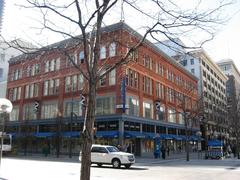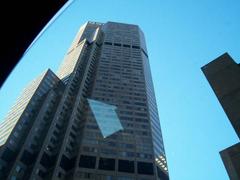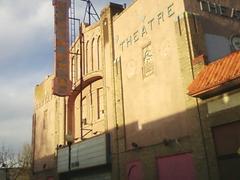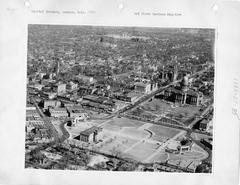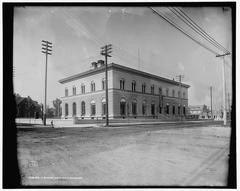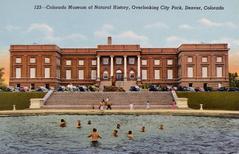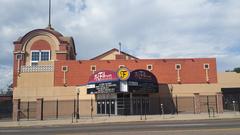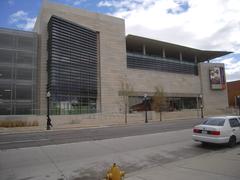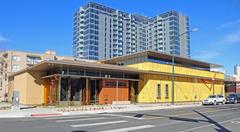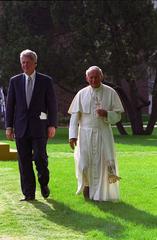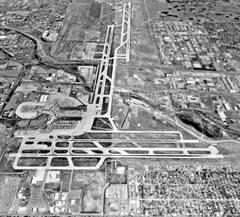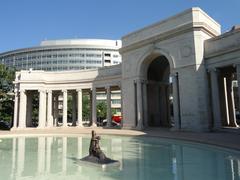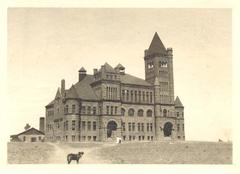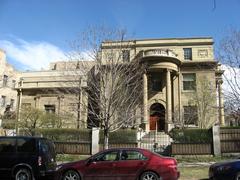
Auraria Campus Visiting Hours, Tickets, and Denver Historical Sites Guide
Date: 03/07/2025
Introduction
Auraria Campus in Denver, Colorado, is a dynamic urban landmark where education, culture, and community intersect. Located at the meeting point of the South Platte River and Cherry Creek, its significance predates Denver itself, serving as a vital hub for Indigenous peoples and as the epicenter of Denver’s early development during the Colorado Gold Rush. Today, Auraria is not just a center for higher education but also a living museum of the city’s multicultural roots, activism, and ongoing transformation. This comprehensive guide details visiting hours, ticketing, transportation, historical landmarks, and nearby attractions—equipping you to make the most of this historic Denver destination (Denver Library; Auraria Historic Consortium).
Contents
- Discover Auraria: Denver’s Historic Heart
- Indigenous Presence and Early Settlement
- Gold Rush Origins
- Growth, Diversity, and Community Life
- 1965 Flood and Urban Renewal
- Displacement and Community Activism
- Creation of the Modern Campus
- Preservation of Historic Landmarks
- Visiting Today: Hours, Tours, and Accessibility
- Photography and Nearby Denver Attractions
- Educational and Cultural Significance
- Tri-Institutional Model
- Commitment to Inclusivity
- Major Landmarks
- Future Developments
- Visitor Information
- Hours, Tickets, Guided Tours
- Parking and Transit
- Campus Navigation and Amenities
- Safety
- FAQs
- Conclusion and Call to Action
- Official Sources and Further Reading
Discover Auraria: Denver’s Historic Heart
Indigenous Presence and Early Settlement
Auraria’s history stretches far before the Gold Rush, rooted in the ancestral lands of the Cheyenne, Arapaho, Ute, and other Native Nations. This area was a seasonal campsite and trading ground, a crossroads of cultures long before Denver’s founding (Auraria Historic Consortium; Denver Library).
Gold Rush Origins
Founded in 1858 by miners from Georgia, Auraria’s name comes from the Latin for gold, “aurum.” The town quickly grew, rivaling nearby Denver City, and by 1860 the two joined to form the city of Denver. Early Auraria was home to a diverse immigrant population, including Hispanic, Jewish, German, Irish, and Italian families (Zippia; Visit Denver).
Growth, Diversity, and Community Life
Auraria thrived as a renter-majority, multicultural neighborhood, marked by its affordable housing and bustling blocks. The area’s rich heritage is still visible in preserved landmarks like the Ninth Street Historic Park and St. Cajetan’s Church (Auraria Campus).
The 1965 Flood and Urban Renewal
A catastrophic flood in 1965 devastated the neighborhood, prompting a federal renewal project that ultimately cleared much of the area. The redevelopment plan, funded by HUD and Denver bond measures, paved the way for the creation of the Auraria Higher Education Center (CU Denver Timeline; Denver Library).
Displacement and Community Activism
Hundreds of families, largely from Hispanic and working-class backgrounds, were displaced by urban renewal. Community leaders, particularly the Auraria Residents’ Organization, advocated fiercely for their rights, launching an enduring legacy of activism and calls for historical preservation (CU Denver History Journal).
Creation of the Modern Campus
In 1972, the Colorado General Assembly authorized the construction of the Auraria Higher Education Center, which now houses Metropolitan State University of Denver, University of Colorado Denver, and Community College of Denver. The campus opened its doors in 1976, serving tens of thousands annually (Auraria Campus).
Preservation of Historic Landmarks
Despite widespread demolition, key historic structures survived, including the Tivoli Brewery (now the Tivoli Student Union), Immanuel Episcopal Church, St. Elizabeth’s Church, and St. Cajetan’s Church. The Ninth Street Historic Park, a restored block of Victorian homes, stands as a testament to the neighborhood’s heritage (Denver Library).
Visiting Auraria Today
Hours and Access
- Campus Grounds: Open to the public Monday–Friday, 7:00 AM–10:00 PM; Saturday, 9:00 AM–5:00 PM.
- Ninth Street Historic Park: Open during daylight hours.
- Tivoli Student Union: Generally open weekdays, 8:00 AM–8:00 PM; hours may vary.
- No admission fee or tickets required for general access.
Guided Tours and Special Events
- Guided Tours: Offered seasonally, including immersive experiences like the “Auraria Parable” walking tour. Advance registration may be required for some tours (Westword).
- Special Events: Auraria hosts a range of cultural festivals, concerts, and art exhibitions—check the Auraria Campus events calendar for details.
Accessibility and Travel Tips
- Public Transit: Served by two RTD light rail stations—Colfax at Auraria and Auraria West—and multiple bus routes (RTD Transit Information).
- Parking: Multiple garages and lots with ADA-accessible spaces (Auraria Parking Map PDF). Registered MSU Denver visitors receive free validated parking.
- Campus is ADA compliant: Wheelchair accessible paths, elevators, and restrooms.
- Bring comfortable shoes and water for walking tours, especially in summer.
Photographic Spots and Nearby Denver Attractions
- Best Photo Ops: Ninth Street Historic Park, Tivoli Student Union, Tivoli Quad, and panoramic downtown views.
- Nearby Attractions: Larimer Square, Ball Arena, Denver Performing Arts Complex, Meow Wolf, and Confluence Park are all within walking distance.
Educational and Cultural Significance
Tri-Institutional Model
Auraria is unique in the U.S. for co-locating three major public institutions, fostering collaboration, shared resources, and a vibrant academic environment for over 38,000 students (Auraria Campus).
Commitment to Inclusivity
The campus is committed to supporting first-generation students, underrepresented groups, and non-traditional learners through affordable housing, expanded childcare, and community-focused projects (Denverite).
Major Landmarks
- Ninth Street Historic Park: Restored Victorian homes and interpretive signage (Auraria Historic Consortium).
- Tivoli Student Union: Historic brewery, now a vibrant student and event center.
- St. Cajetan’s Church: A symbol of the area’s Hispanic heritage, now an event venue (Visit Denver).
- Colorado Hispanic History Museum: A forthcoming museum celebrating Colorado’s Hispanic and Latino communities (Colorado Hispanic History Museum).
Future Developments
The Ballfield Project, beginning construction in 2025, will introduce on-campus student housing, affordable workforce housing, expanded childcare, and new dining/retail—transforming Auraria into a more residential, vibrant urban neighborhood (Denverite; MSU Denver News).
Visitor Information
Parking
- Multiple paid lots and garages; rates typically $5–$8/day, with higher rates for special events (Auraria Parking Map PDF).
- ADA-compliant spaces and EV charging available.
Navigation and Amenities
- Maps: Interactive and printable maps online (Auraria Campus Interactive Map).
- Dining: Cafés and eateries on campus and nearby.
- Restrooms and Wi-Fi: ADA-accessible restrooms and free guest Wi-Fi campus-wide.
- Information Desks: In Tivoli Student Union and main admissions buildings.
Safety
- 24/7 campus police, emergency call boxes, well-lit walkways.
- Smoking in designated areas only.
Frequently Asked Questions (FAQ)
Q: What are Auraria Campus visiting hours?
A: Campus grounds are open Monday–Friday, 7:00 AM–10:00 PM, and Saturday, 9:00 AM–5:00 PM. Specific building hours may vary.
Q: Is there an admission fee?
A: No, campus and historic sites are free to visit; some events or tours may require tickets.
Q: Are guided tours available?
A: Yes, seasonal and special-topic tours are offered; check event listings for details.
Q: How do I get to Auraria Campus?
A: Accessible by car, RTD light rail and buses, bike, or on foot.
Q: Is the campus accessible for visitors with disabilities?
A: Yes—ADA-compliant parking, restrooms, ramps, and elevators throughout.
Q: Can I take photos on campus?
A: Yes, photography is welcome, especially in historic areas.
Conclusion and Call to Action
Auraria Campus is a living monument to Denver’s layered history, cultural diversity, and ongoing community resilience. It offers visitors free access to historical landmarks, immersive tours, and a vibrant slate of events—making it an essential stop for anyone interested in Denver’s past and present. Plan your visit by checking current hours and events at the Auraria Campus Official Website, take a guided or self-guided tour, and immerse yourself in the stories, architecture, and culture that define this remarkable campus. Stay updated by following Auraria on social media and downloading interactive visitor apps for enhanced experiences.
Official Sources and Further Reading
- Denver Library: Auraria Neighborhood History
- Auraria Historic Consortium
- Denver City Cast: Auraria Neighborhood Guide
- MSU Denver Visit Information
- CU Denver Timeline
- CU Denver History Journal: Displaced Roots
- Denverite: Auraria Mixed-Use Development
- Westword: Immersive Auraria Parable Walking Tour
- Colorado Hispanic History Museum
- Visit Denver: St. Cajetan’s at Auraria
All information has been verified with official Auraria Campus and Denver tourism sources to ensure accuracy and reliability.




